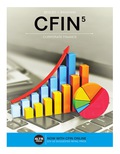
Financial markets are the markets or the place where financial instruments like equities, bonds, derivatives, currencies, and precious metals are traded among buyers and sellers. These markets represent the mechanisms by which investors and debtors are brought together.
Explanation of Solution
The following are the ways in which financial markets run freely and efficiently, and affect the standard of living in a country.
In financial markets, an investor gets an opportunity to make a choice to select the available investment securities which give high returns with low risk.
In financial markets, a borrower can get the optimum terms for his debt or borrowings with respect to his need and credit worthiness.
Financial intermediaries in the financial markets such are banks, credit unions, etc., collect deposits from investors and provide loans to individuals and firms those required. These intermediaries bring together investors and borrowers as efficiently as they currently do.
Financial markets provide an opportunity for foreign investors through foreign direct investment which makes more investments for small organizations and helps in increasing employment.
Want to see more full solutions like this?
- Purchasing power of risk hit the investor when there are chances that the: a.None of these b.Real return on a security is equal to the nominal return c.Real return on a security is less than the nominal return d.Real return on a security is more than the nominal returnarrow_forwardneed help by real expert and true answer...arrow_forwardneed help by real expert and true answer.arrow_forward
- no AI What is the full form of "WC"? a.Withdraw Cash b.Wage Capital c.Wage Collateral d.Working capitalarrow_forwardPlease solve this question by using appropriate method.arrow_forwardWhat is the full form of "YTD"? a.Yield of Divergence b.Year to Delivery c.Year-to-date d.Yield to Debitarrow_forward
- Question Three A company needs $10,000 in 5 years to replace a piece of equipment. How much must be invested now at an interest rate of 8% p.a. compounded daily in order to provide for this replacement?arrow_forwardYear Free Cash Flow (FCF) 0 -$17,000,000 1 $4,980,000 2 $4,980,000 3 $4,980,000 4 $4,980,000 5 $6,980,000 The Net Present Value at a discount rate of 15%: Present Value (PV) for each year: PV(Year 1) = $4,980,000 ÷ (1 + 0.15)^1 = $4,330,435. PV(Year 2) = $4,980,000 ÷ (1 + 0.15)^2 = $3,765,590. PV(Year 3) = $4,980,000 ÷ (1 + 0.15)^3 = $3,274,426. PV(Year 4) = $4,980,000 ÷ (1 + 0.15)^4 = $2,847,328. PV(Year 5) = $6,980,000 ÷ (1 + 0.15)^5 = $3,477,617. Sum of PVs = $4,330,435 + $3,765,590 + $3,274,426 + $2,847,328 + $3,477,617 = $17,695,396. Initial Investment = $17,000,000. NPV = Total PV - Initial Investment = $17,695,396 - $17,000,000 = $695,396. Calculate The Internal Rate of Returnarrow_forwardPlease solve this question by using appropriate method.arrow_forward
 EBK CONTEMPORARY FINANCIAL MANAGEMENTFinanceISBN:9781337514835Author:MOYERPublisher:CENGAGE LEARNING - CONSIGNMENT
EBK CONTEMPORARY FINANCIAL MANAGEMENTFinanceISBN:9781337514835Author:MOYERPublisher:CENGAGE LEARNING - CONSIGNMENT Intermediate Financial Management (MindTap Course...FinanceISBN:9781337395083Author:Eugene F. Brigham, Phillip R. DavesPublisher:Cengage Learning
Intermediate Financial Management (MindTap Course...FinanceISBN:9781337395083Author:Eugene F. Brigham, Phillip R. DavesPublisher:Cengage Learning


